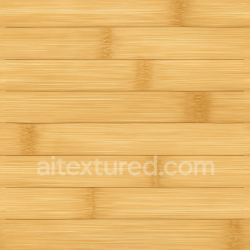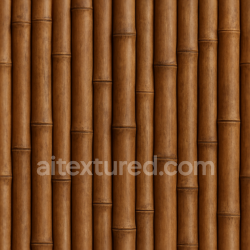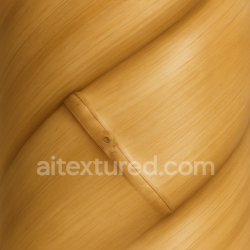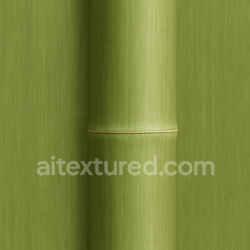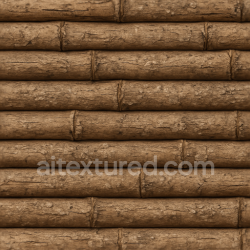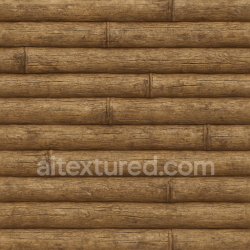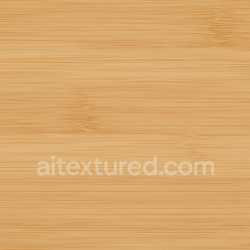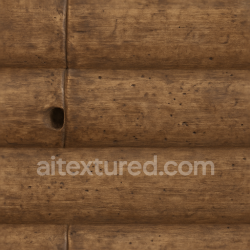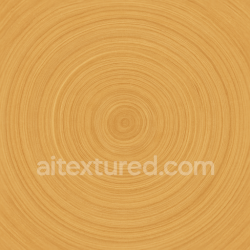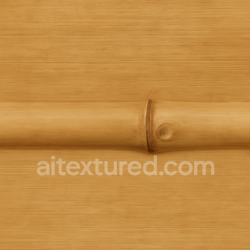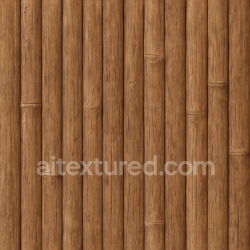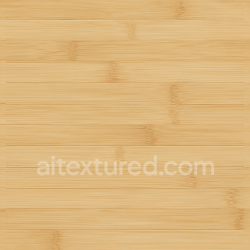Comprehensive Guide to Seamless PBR Wallpaper Textures for Realistic 3D Projects
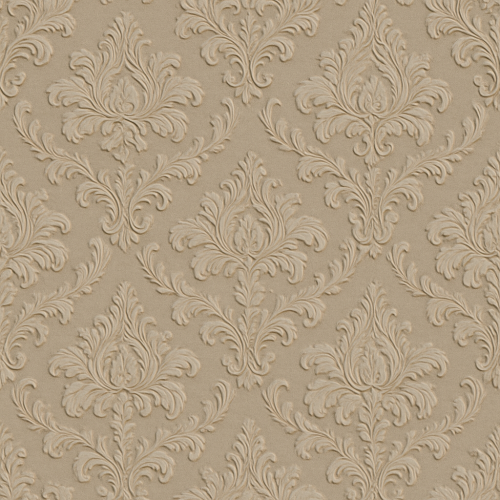
Acquiring high-quality wallpaper textures for physically based rendering (PBR) workflows demands a meticulous approach to capture both the intricate surface details and the nuanced material properties that define the final appearance. Wallpaper, as a decorative surface, presents unique challenges: its patterns often contain fine, repetitive motifs with subtle embossing or variations in gloss and reflectivity. Moreover, the scale of these details can range from broad, low-frequency color shifts to micro-scale surface irregularities. Achieving a texture suite that accurately represents these characteristics involves careful planning in acquisition methods, controlled lighting, and precise calibration to ensure the resulting maps—albedo, roughness, normal, ambient occlusion (AO), height, and where applicable, metallic—are both faithful and optimized for real-time rendering engines such as Unreal Engine or offline tools like Blender’s shader nodes.
The initial step in capturing wallpaper textures is selecting an acquisition technique that balances fidelity, flexibility, and efficiency. Photogrammetry, scanning, and traditional photography each offer distinct advantages and limitations. Photogrammetry excels in capturing three-dimensional surface intricacies and spatial variations, which is particularly valuable for wallpapers with embossed or textured finishes. By photographing the surface from multiple angles under diffuse lighting, one can reconstruct a detailed mesh and generate normal and height maps that convey subtle relief. However, photogrammetry requires careful setup to avoid issues such as specular highlights or shadows that can corrupt the albedo extraction. For wallpaper, which typically features relatively flat but intricately patterned surfaces, a high-resolution camera with a macro lens is essential to capture the fine details without introducing distortion.
When employing photogrammetry, lighting conditions must be carefully controlled to minimize shadows and specular reflections that can confuse the reconstruction algorithms. A diffuse light dome or multiple soft light sources placed symmetrically around the subject helps maintain uniform illumination, ensuring that the color information remains consistent and the surface geometry can be accurately inferred. The use of polarizing filters on both lights and camera can further reduce glare, a common challenge with wallpapers that often have semi-gloss or satin finishes. Calibration targets with known color values and gray scales should be included within the frame to facilitate post-processing color correction and exposure normalization, thereby improving the accuracy of the albedo map crucial for PBR shading.
An alternative or complementary method involves flatbed or drum scanning, which can produce highly detailed albedo and height data. This method is particularly effective for wallpaper samples that can be removed or sourced as flat sheets. Scanning offers the advantage of extremely even lighting and consistent resolution across the entire texture, avoiding perspective distortion inherent in photography. High-resolution scanners capable of capturing subtle height information through specialized contact or optical methods can generate height and normal maps directly. However, this method is limited by the physical constraints of the scanner size and the inability to capture lateral variations or larger sample sizes in a single pass. Additionally, scanners cannot adequately capture the reflectance properties such as roughness or specular variations, necessitating supplementary methods to acquire those maps.
Traditional photography remains a cornerstone for wallpaper texture acquisition, especially when dealing with in-situ wall surfaces or non-removable wallpaper samples. Using a DSLR or mirrorless camera with a high-megapixel sensor and a macro or standard lens allows for flexible framing and depth of field control. To faithfully capture the albedo, diffuse lighting conditions are mandatory; shooting on overcast days or using a light tent can help achieve this. For roughness and specular information, controlled lighting setups with variable angles and polarization can be employed. Capturing multiple images under different lighting conditions—known as photometric stereo—enables the extraction of surface normals and roughness variations by analyzing changes in reflectance. This technique is highly effective for wallpapers with embossed patterns or varying gloss levels, as it isolates the micro-surface features that influence light scattering.
Post-capture processing is critical to transform raw data into usable PBR maps. For albedo, it is essential to remove shadows, highlights, and any color casts introduced by lighting or camera settings. Using color calibration targets embedded in the shot allows for precise white balance and color correction in software such as Adobe Lightroom or Capture One. The corrected albedo texture should represent the diffuse color untainted by lighting artifacts or shading. It is common practice to generate a seamless tile by carefully cloning edges or using specialized texture software like Substance Designer or Quixel Mixer to mitigate visible seams in game engines. Ensuring the tileability of wallpaper textures is vital because these surfaces often cover large areas, and repetition artifacts can break immersion.
Normal and height maps derived from photogrammetry or photometric stereo require refinement to remove noise and enhance detail. Baking normal maps from high-poly meshes generated during reconstruction or directly generating them from height maps through tools like xNormal or Substance Designer provides control over the intensity and scale of surface details. Ambient occlusion maps, which simulate self-shadowing in crevices, can be baked from the mesh or approximated using curvature and cavity maps generated from the height data. These AO maps improve the perception of depth and pattern intricacies under indirect lighting in PBR workflows.
Roughness maps are often the most challenging to acquire directly. Since roughness controls the microsurface scattering of light, it is typically inferred from reflectance observations under varying lighting angles and polarizations. One practical approach is to capture a series of images with cross-polarization filters, which isolates diffuse reflectance from specular highlights. By analyzing the intensity and distribution of specular reflections, artists can hand-paint or procedurally generate roughness maps that correspond to the wallpaper’s finish—distinguishing between matte painted areas and glossy varnished sections, for example. Metallic maps are generally not applicable to wallpaper, except in cases of specialty wallpapers with metallic inks or foils; these require targeted acquisition methods such as spectrometry or multispectral imaging to isolate metal reflectance properties.
Optimizing the captured textures for real-time engines involves balancing resolution, tiling, and memory footprint. Wallpaper textures typically demand high resolution due to their close viewing distances and detailed patterns. Capturing at resolutions of 8K or higher per tile ensures that fine details remain crisp when tiled across large surfaces. However, to avoid excessive memory usage, it is advisable to create multiple mipmap levels and consider using detail masks or micro-variation overlays to break repetitive patterns without increasing base texture size. Micro-variation maps, derived from subtle color and normal detail layers, introduce perceived randomness that combats tiling artifacts and enhances realism.
Within Unreal Engine or Blender, these PBR maps are integrated into shader networks that simulate accurate light interaction. Unreal’s material editor allows for physically accurate roughness and metallic inputs, while normal and AO maps improve shading fidelity under dynamic lighting. Blender’s Principled BSDF shader similarly benefits from well-calibrated inputs. Calibration between texture maps and engine lighting models is crucial; for instance, ensuring that the roughness map’s range aligns with the engine’s interpretation avoids materials appearing overly shiny or dull. Testing wallpaper textures in representative lighting scenarios—diffuse skylight, direct sunlight, and interior artificial lights—allows artists to fine-tune parameters for optimal realism.
In summary, acquiring wallpaper textures suitable for PBR workflows is a complex process demanding careful choice of acquisition methods and controlled capture environments. Photogrammetry offers detailed geometry and height data, scanning provides uniform albedo and height capture, and photography with photometric or cross-polarized techniques isolates reflectance properties required for roughness and normal maps. Post-processing to ensure accurate color calibration, seamless tiling, and noise-free normal and AO maps is essential to create a versatile texture set. Finally, optimizing resolution and integrating micro-variations help maintain visual fidelity without compromising performance in real-time engines like Unreal or rendering tools such as Blender, resulting in wallpaper textures that convincingly replicate both the decorative patterns and physical material qualities critical for immersive PBR applications.
Authoring wallpaper textures for physically based rendering workflows demands a precise balance between aesthetic accuracy and technical robustness, particularly when integrating complex patterned motifs such as damask or floral designs. These patterns, typically rich in detail and subtle surface variations, require careful attention during both procedural generation and photographic editing to ensure seamless tiling, realistic material response, and efficient in-engine performance.
Procedural approaches to wallpaper texturing begin with pattern creation, often leveraging vector-based or algorithmic methods to generate motifs that can be infinitely tiled without visible seams. Tools like Substance Designer or Blender’s procedural texture nodes offer granular control over pattern repetition, scale, and variation. For instance, damask motifs—characterized by symmetrical, often floral or arabesque elements—can be constructed using mirrored patterns coupled with noise and curvature maps to introduce naturalistic imperfections. Procedural generation allows for parametric adjustment of pattern density and motif intricacy, facilitating rapid iteration and easy customization to fit different architectural scales or stylistic requirements.
A critical consideration in procedural workflows is the generation of seamless tileable textures. This involves carefully aligning UV coordinates and employing wrap-around functions to ensure pattern continuity at texture borders. Procedural noise and variation layers are introduced to disrupt mechanical repetition, which is essential given the large surface areas wallpaper often covers. Micro-variations can be implemented via subtle perturbations in normal and height maps, simulating fabric weave irregularities or the slight embossing present in many traditional wallpapers. This micro-detail is crucial for convincing light interaction, especially under dynamic lighting in engines like Unreal Engine where material response depends heavily on accurate normal and roughness inputs.
Photographic authoring, by contrast, relies on high-fidelity capture of real wallpaper samples, often combining multiple exposures and lighting conditions to extract diffuse color and surface characteristics. High-resolution scans or macro photography under controlled lighting conditions enable the isolation of albedo without baked-in shadows, which is fundamental for PBR accuracy. Subsequent editing in software like Adobe Photoshop or affinity photo involves careful retouching to remove imperfections unrelated to the pattern, such as dirt or damage, while preserving the inherent textural nuances.
Seamless tiling in photographic textures requires careful cloning and patching at the borders, often supported by displacement and height map data to maintain consistent surface topology across seams. Photogrammetry-derived normal and height maps can be refined using tools such as xNormal or CrazyBump, and further optimized in Substance Painter or Designer to balance detail fidelity with real-time performance constraints. When replicating embossed or velvet finishes—common in luxury or vintage wallpaper styles—capturing and authoring accurate height and roughness maps becomes paramount. Embossed patterns manifest as raised details that alter local micro-shadowing and specular highlights, necessitating exaggerated yet physically plausible height map data to drive effective parallax or tessellation effects in engines.
Velvet finishes, characterized by their anisotropic reflectance and soft, diffuse scattering, require nuanced roughness and specular parameterization. While the albedo layer captures the base color and pattern, roughness maps must reflect the directional variation in surface reflectivity. Procedurally, this can be simulated by incorporating anisotropic noise patterns aligned with the weave direction or nap of the fabric. Photographically, capturing these effects often mandates multiple lighting angles and polarizing filters to isolate specular response, which can then be baked into roughness or specular intensity maps. In Unreal Engine’s material editor, these maps can be combined with anisotropic shading models or custom shader nodes to approximate velvet’s characteristic sheen and depth.
Calibration of wallpaper textures entails ensuring that pattern scale corresponds realistically to real-world dimensions, which is critical for maintaining immersion in architectural visualization. This is often achieved by referencing real wallpaper sample dimensions during UV unwrapping and texture authoring. Procedural methods facilitate this by allowing direct input of pattern repeat size, while photographic workflows require meticulous measurement and scaling of the captured texture data. Furthermore, calibration extends to matching the brightness and color response of the albedo maps to standardized color spaces (sRGB or ACEScg), ensuring consistent appearance under varying lighting conditions.
Optimization strategies focus on balancing texture resolution and channel packing to reduce memory usage without sacrificing visual quality. For example, roughness and metallic maps can often be packed into different color channels of a single texture, with metallic maps usually being zero for wallpaper materials, unless metallic foil or metallic threads are part of the design. Ambient occlusion (AO) maps, which enhance shadowing in fine details, should be baked considering the pattern’s topology and height data, enabling subtle depth cues without over-darkening. Height maps, while essential for parallax effects, should be optimized to avoid excessive tessellation costs, with procedural workflows offering the advantage of generating lower-resolution LOD variants dynamically.
In terms of engine integration, both procedural and photographic wallpaper textures benefit from physically accurate material setups. In Unreal Engine, this involves importing albedo, normal, roughness, AO, and height maps correctly configured with sRGB disabled on non-color textures to preserve data integrity. Material instances can then be used to tweak parameters such as roughness intensity or height displacement on a per-wallpaper basis, facilitating variation across scenes. Blender’s shader editor similarly supports PBR workflows, with shader nodes allowing procedural layering of patterns and fine control over bump and displacement mapping, which can be previewed in real-time using Eevee or Cycles renderers.
Ultimately, the choice between procedural and photographic authoring hinges on project requirements. Procedural methods excel in flexibility, scalability, and precise control over pattern repetition and material properties, making them ideal for projects demanding multiple variations or rapid iteration. Photographic authoring, while more labor-intensive, provides unmatched realism when capturing complex material finishes and subtle imperfections inherent to physical wallpaper samples. Combining both approaches—such as using photographic albedo maps augmented with procedural height and roughness variations—can yield highly authentic yet optimized wallpaper textures suitable for modern PBR pipelines.
Creating physically based rendering (PBR) maps for wallpaper materials requires a nuanced understanding of both the physical properties inherent to wallpaper surfaces and the specific demands of real-time or offline rendering engines. Wallpaper, as a decorative surface, typically exhibits a combination of subtle material variations—ranging from smooth, matte painted paper to slightly embossed vinyl or fabric textures. Each of these variations influences the selection and authoring of PBR texture maps, which collectively simulate realistic light interaction and surface response.
The foundation of any physically based texture set begins with the albedo (or base color) map. For wallpaper, this map must accurately capture the diffuse reflectance without baked-in shadows or highlights, as these are generally contributed dynamically by lighting in the 3D environment. When acquiring reference for wallpaper albedo, high-resolution, evenly lit photographs or flatbed scans are preferred to minimize directional lighting and maintain color fidelity. If capturing real samples, diffuse illumination setups or polarizing filters can help reduce specular reflections and color bleed, ensuring the albedo represents only the intrinsic pigment and pattern of the wallpaper. Authoring tools such as Substance Painter or Designer can then clean and calibrate this map, removing any unwanted tonal shifts and ensuring neutral grayscale values correspond to the physical reflectance. Because wallpaper patterns are often repetitive, careful attention must be paid to seamless tiling; edges should be meticulously blended or generated procedurally to avoid obvious repetition artifacts when tiled across large surfaces.
The roughness map is critical in defining how light scatters off the wallpaper surface. Unlike metals or glossy plastics, wallpaper tends to have a predominantly matte appearance with varying degrees of micro-roughness depending on material composition. Vinyl wallpapers might exhibit a slight sheen, whereas paper-based wallpapers are more diffuse. Roughness maps for wallpaper are typically derived from a combination of photographic data and procedural noise to incorporate micro-variation. For example, a base roughness value can be informed by macro observations—paper wallpaper might have a roughness around 0.7 to 0.9 in linear space—while subtle noise modulates this base value to simulate natural surface variation, such as faint embossing or fiber irregularities. This micro-variation is vital for breaking up uniform reflections and avoiding the "plastic" look common in overly smooth materials. When authoring roughness maps, calibration against known reference materials or render comparisons is advisable. In engines like Unreal Engine or Blender’s Cycles and Eevee, the roughness map’s grayscale intensity directly controls the specular highlight spread and intensity, so maintaining physically plausible values is essential for realistic results.
For most wallpaper materials, the metallic map is uniformly black (zero) because wallpaper is a dielectric, non-metallic surface. This simplifies the workflow but also underscores the importance of correctly setting the metallic channel to zero to prevent unintended specular behavior or color shifts. Occasionally, wallpapers with metallic inks or foil accents may warrant a non-zero metallic map, but these should be authored with care, considering how metallic surfaces reflect environment maps and interact with light differently than dielectrics. When incorporating metallic details, it is crucial to isolate these areas precisely, as improper metallic values can cause rendering artifacts or break energy conservation principles in PBR workflows.
Normal maps play a pivotal role in conveying the fine surface details and embossing characteristic of many wallpapers. While height maps describe macro displacement, normal maps provide the microgeometry cues necessary for convincing light interaction. For wallpaper, the normal map is often derived from high-resolution photogrammetry scans, displacement data, or hand-painted in cases of stylized or minimal relief patterns. The embossed patterns, subtle fabric textures, or paper grain are all encoded in the normal map to influence shading normals without adding geometric complexity. When authoring normal maps, it is important to maintain consistent tangent space orientation and ensure that the map’s details correspond to the scale of the wallpaper texture. Overly exaggerated normal details can create unrealistic shadowing or highlight artifacts, especially when tiled. Therefore, normal maps should be calibrated in context, tested under various lighting conditions in the target engine, and adjusted to balance detail visibility with visual coherence.
Height maps complement normal maps by providing displacement data that can be used for parallax occlusion mapping, tessellation, or subtle vertex displacement in compatible engines. For wallpaper, height maps are generally low amplitude, representing soft embossing or surface undulations rather than harsh geometric features. Height maps are often grayscale images where white represents raised areas and black recessed regions. When generating height maps, it is vital to ensure smooth gradients and avoid harsh transitions unless the wallpaper design specifically calls for sharp relief. Height data can be extracted from the same photogrammetry or scanned sources as normal maps, or generated procedurally by converting high-pass filtered albedo or roughness maps. In practical engine usage, height maps should be optimized for performance: subtle displacement effects often have diminishing returns in real-time applications and must be balanced against shader cost. In Unreal Engine, for instance, parallax occlusion mapping can simulate depth without heavy tessellation, but requires finely tuned height maps to prevent artifacts such as shadow swimming or texture popping.
Ambient occlusion (AO) maps, while often overlooked for wallpaper, can enhance depth perception by simulating self-shadowing in cavities and crevices of embossed or textured patterns. AO is especially useful in baked lighting setups or offline renders but can also be employed in real-time engines as a multiply layer over the albedo to darken concave areas. For wallpaper, subtle AO maps derived from high-resolution geometry or baked from displacement maps can improve the perception of relief and material aging effects. Care should be taken not to overuse AO, as wallpaper is generally a flat surface and excessive shadowing can appear unnatural.
In regard to tiling and micro-variation, wallpaper materials often cover large wall areas, necessitating textures that tile seamlessly without noticeable repetition. To achieve this, artists must carefully balance pattern repetition with variation maps that introduce random offsets, color shifts, or noise overlays. These variations can be encoded in secondary UV channels or vertex colors to modulate albedo, roughness, or normal maps in the shader, breaking uniformity. Procedural texturing approaches in Substance Designer or Blender’s node systems facilitate this by allowing non-destructive pattern generation with controlled randomness, essential for large-scale architectural visualization or game environments.
Calibration and optimization are paramount when developing wallpaper PBR textures. Calibration involves ensuring that the albedo color values conform to realistic reflectance curves and that roughness and normal maps respond accurately under diverse lighting conditions. Artists should test textures across different engines—Unreal Engine’s physically based shading model versus Blender’s Principled BSDF—to confirm consistent appearance. Optimization requires balancing texture resolution and channel packing; for example, roughness and metallic can often be combined in a single map’s channels, and ambient occlusion can be packed into unused alpha channels if the workflow permits. For wallpaper, given its relatively low micro-detail, mid-range texture resolutions (e.g., 2048x2048 or 4096x4096 for ultra-high fidelity) usually suffice, with tiling employed to cover large surfaces efficiently.
In practice, when importing wallpaper textures into Unreal Engine, it is advisable to set the albedo textures’ sRGB flag correctly to ensure proper gamma correction, while roughness, metallic, and normal maps should remain linear. Unreal’s material editor allows for complex layering, enabling the combination of base wallpaper textures with dirt masks or wear overlays, which further enhance realism. Blender users should leverage the Principled BSDF shader node, plugging the albedo into the Base Color input, roughness into Roughness, normal maps into Normal via a Normal Map node, height maps via Displacement nodes with suitable mid-level offsets, and AO as a multiply factor on the base color or in the shader’s AO input if available. Realistic results often come from iterative refinement, where texture maps are adjusted in response to rendered previews under multiple lighting scenarios, including direct light, ambient skylight, and interior point lights.
Ultimately, creating PBR texture maps for wallpaper demands a disciplined approach to capturing and authoring accurate physical properties. The interplay between albedo, roughness, normal, height, and ambient occlusion maps must be carefully controlled to reproduce the subtle interplay of light on wallpaper surfaces, from the diffuse coloration and soft sheen to the faint embossing and fabric textures. The absence or misuse of any one map can break the physical plausibility, resulting in surfaces that appear flat, plastic, or visually inconsistent. Through meticulous acquisition, procedural enhancements, calibration, and engine-specific optimization, PBR wallpaper textures can convincingly simulate the complex visual qualities of real-world materials, contributing to immersive and believable 3D environments.
